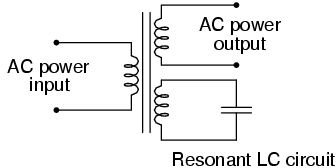Transformers and their use in Voltage Regulation
Introduction
We studied about Faraday’s law in our previous article. In this article we will study how a steady voltage could be gained by using a transformer as a voltage regulator when either the load varies or the input voltage varies within reasonable limits
Voltage Regulation
As we know a transformer steps up or steps down the input voltage depending on the ratio of turns between the primary and the secondary windings. It also leads to an increase or decrease of the associated current. Now the input power and voltage (and hence the current) is constant and so should be the output voltage (and current). But there is another factor in the secondary circuit which comes into play and that factor is the load. It is not always possible to have a fixed or constant load but it may vary considerably within the given limits over a period of time depending on where the transformer is actually used.
Let us take an example of a step down transformer supplying electricity to a home which has a lot of rooms and electrical gadgets such as heaters, geysers, lightings and so forth. Obviously the load cannot be steady and will depend on usage of the household people. The change in load will cause change in current and hence the voltage. If the output voltage varies too much with current it is certainly not good for the equipments. Though sometimes there are other situations where perfect voltage regulation may not be desirable. For example let us think about a step down transformer which is used in arc-welding. The basic function of that transformer is to supply low voltage and high current for the welding process to take place. Nevertheless the voltage required when the welder is striking an arc is much greater than the voltage required for keeping the arc sustained.
The Regulation Effectiveness of a transformer is measured as a percentage between no load and full load conditions and is given by the formula
Regulation Percentage = [No load voltage – Full load voltage/Full load voltage] * 100
The typical value for this percentage should be less than say 3% for the transformer to be considered to have good voltage regulations characteristics
How to Regulate Voltage
We looked at the need for voltage regulation but how do we actually go about achieving it? Several types of voltage regulators are based on different principles but we will limit ourself to those using transformers as the main ingredient for the voltage regulation recipe.
In the example of the household arrangement, there are transformers which have a servo mechanism for varying the output voltage based on load feedback.
In case of variable regulation requirements such as the case of the welding transformer discussed above, most of the welding transformers by having a mechanical system for moving the iron core in and out of the magnetic couplings so as the deliberately reduce the regulation effect.
Voltage regulation is not only required from the load point of view but also the primary voltage may change and the secondary voltage needs to be maintained constant for reasonable variations of the primary voltage. A method which is effective in such a case is the use of a ferroresonant transformer for automatic voltage control. These transformers operate under conditions of persistent core saturation which means that any variations in the voltage within reasonable limits does not affect the output voltage significantly thus achieving the voltage regulation. These types of transformers usually have two secondary windings. One is used to supply the output voltage while the other acts as a harmonics filter to filter out harmonics created by core saturation. The figure below illustrates this concept clearly.
Hence we have seen that transformers can also be used for partial voltage regulation apart from stepping up or stepping down of the voltage.
